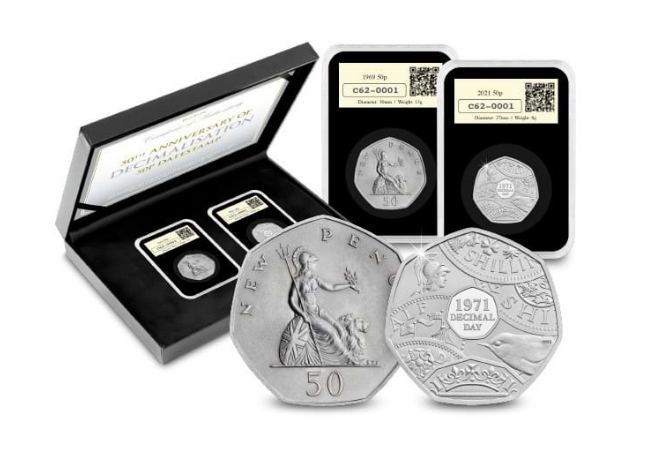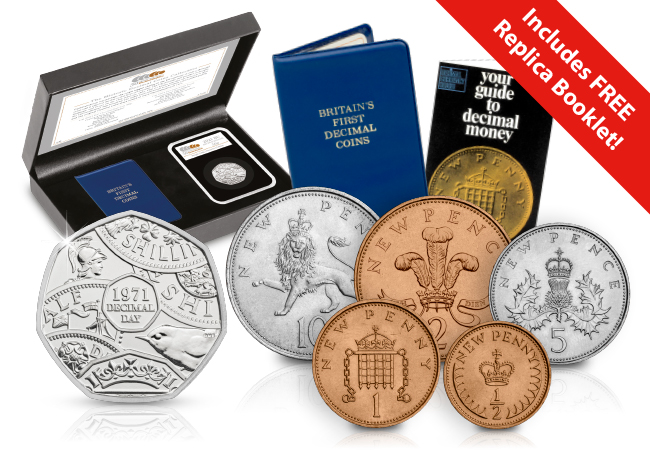Posts Tagged ‘historic coins’
The countries that went Decimal long before the UK…
On 14th February 1971, the country went to bed with one currency, and woke with another. The following day, 15th February 1971, Britain went decimal. And this year marks the 50th anniversary of this monumental change.
The UK has been at the forefront of iconic and innovative coin designs throughout history. From King Edward III’s first gold coin which was introduced to the UK in 1344, to the experimental and iconic new designs seen on The Royal Mint’s latest issues.
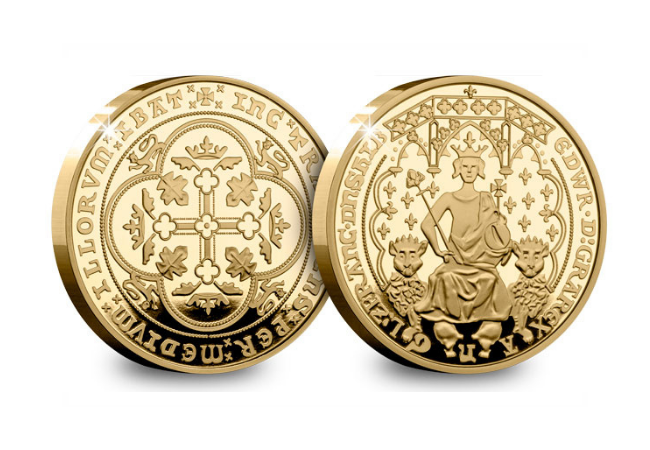
But the UK wasn’t the first country to go decimal. In fact, it was rather slow in its conversion and was one of the last countries in the world to go decimal. And the growing pressure of a world around it changing to Decimal currency would eventually push the UK to make the switch…
Who was the first?
Russia is considered the first country to go decimal, as under Tsar Peter the Great, the Russian Ruble was introduced with a sub-division of 100 Kopeks. It wasn’t until almost 100 years later in 1794 that France followed suit with the Franc, and the Netherlands was the third European country to go decimal in 1817 with the Dutch Guilder. Impressively, there are now only two countries in the world that are still using non-decimal currency – Madagascar and Mauritania (and interestingly both countries’ currencies are sub-divided into units of 5).
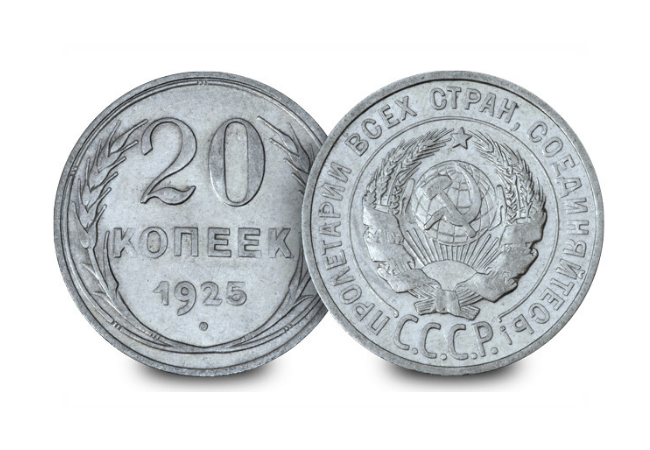
What about the Commonwealth?
By the 1960s, half the world had gone decimal and a number of Commonwealth countries had also made the switch to a decimal currency. Australia, New Zealand, and South Africa all turned to decimal throughout the 1960s giving rise to a powerful decimalisation movement in the UK. As the world around it converted to a modern decimal currency, it seemed inevitable that the UK would soon have to follow suit.
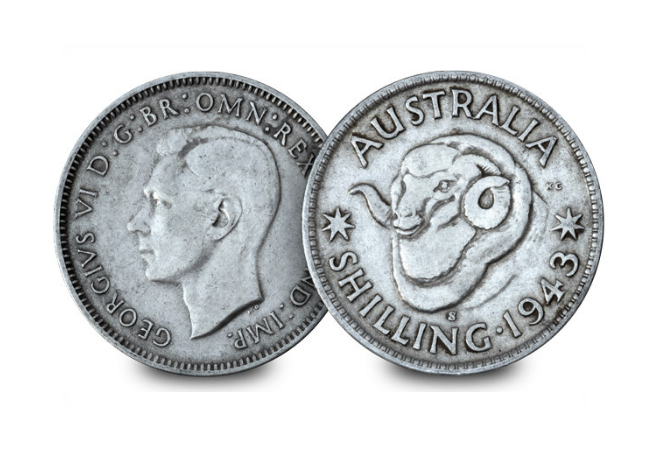
By the time the UK eventually got to Decimal Day, the majority of the world had already made the switch. That includes the likes of the US, Greece, Spain, Switzerland, The Philippines, Nova Scotia, Bolivia, China, Brazil, Jamaica, Fiji, and many more.

When D-Day finally came…
When Decimal Day finally arrived in 1971, many countries around the world had long since made the switch. For the UK, although the wheels had been set in motion with the introduction of the Florin 120 years prior, it wasn’t until 1968 that decimal coins officially circulated. The 10p and 5p coins were issued alongside their pre-decimal siblings, the Florin and Shilling, for almost 3 years before Decimal Day. Importantly, the first 50p coin entered our circulation in 1969, ultimately becoming the collector’s staple denomination. Fittingly, it is also the denomination that The Royal Mint have chosen to commemorate the 50th anniversary of Decimalisation this year.
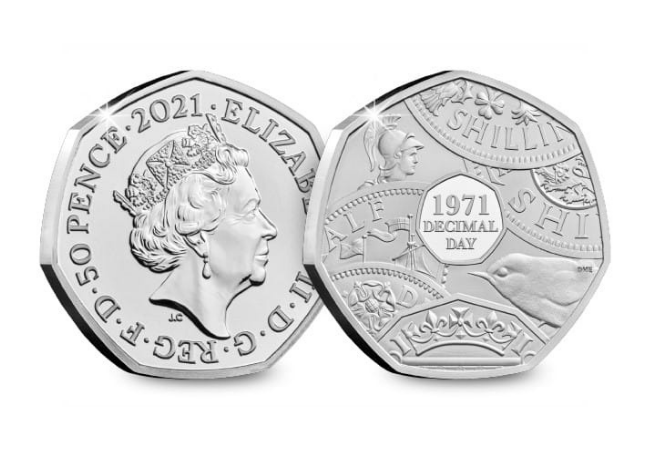
These early introductions helped the public warm to decimalisation and after seeing the world around them change. 15th February 1971 marked a long foreseen, yet inevitable event for the public – the biggest for UK coinage in over a thousand years! It altered the lives of everyone in the UK, remember these were the days before bank cards, and people had to learn a whole new currency! It is certainly an important moment in the history books.
If you’re interested: A NEW DateStamp™ has been authorised!
An original UK 1969 50p coin has been paired alongside a BRAND NEW 2021 UK 50th Anniversary of Decimalisation BU 50p to mark the upcoming 50th anniversary. Each will be officially postmarked by Royal Mail on the day, preserving your coins in a moment in time. Just 2,021 50th Anniversary of Decimalisation 50p DateStamp™ pairs have been authorised, act NOW to pre-order yours.
The Victorian attempts at decimalisation that didn’t quite go to plan…
Next month marks the 50th anniversary since the UK switched to decimal currency, leaving behind the old Pounds (£), Shillings (/-) and Pence (d) and introducing the decimalised coins we know today. You might even remember Decimal Day in 1971 yourself, using conversion charts and rhymes to learn the new currency and the excitement of seeing the new coins in your change.
In the 1820s, discussions for a new decimal currency had already begun, and in 1849 a new decimal coin was introduced in the UK. But its introduction didn’t quite go as planned and decimalisation was delayed for almost 130 years!

The Florin
The Florin first entered circulation in 1849 and had a value of 1/10th of a pound, or 24 pence (in old money). Supposedly, the name came from a similar coin issued in the Netherlands to help with decimalisation there. The Florin (or Two Shilling Coin) featured a special portrait of Queen Victoria in a medieval gothic style. It was the first time since Charles II that a monarch was depicted on a portrait wearing a crown.
Blamed for famine and sickness
The Gothic portrait was featured on the Florin when it was first introduced in 1849. Because the bust was larger than the previous Young Head portrait, the design omitted ten important letters. The words “DEI GRATIA” had been removed from the coin’s inscription. In a deeply religious society, the fact that the words meaning “by the grace of God” no longer appeared on the coin caused outrage.
Many people believed that the lack of the inscription had angered God and caused famine and sickness at the time, leading many to avoid the coin altogether.
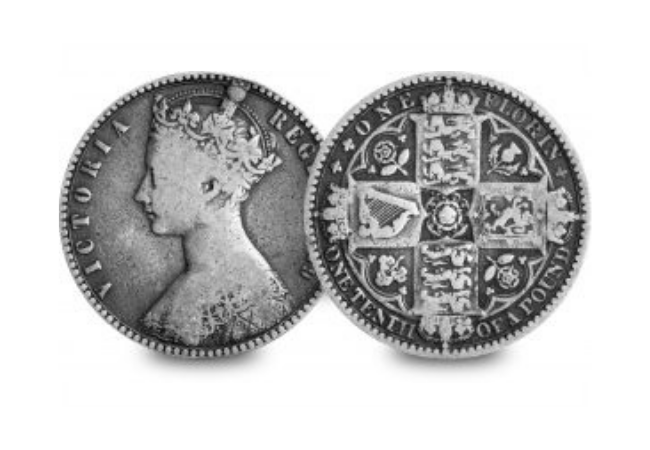
One of the shortest-lived coins in UK history
The public outrage meant that the design was altered to include a shortened version of DEI GRATIA (d.g.) by making the diameter of the coin 2mm bigger. This coin soon became the Gothic Florin and was better received by the public, but it’s safe to say that the disaster with the Godless Florin tainted the idea of decimalisation for many years. It also meant that the Godless Florin circulated for just a few years, making it one of the shortest-lived coins in our history!
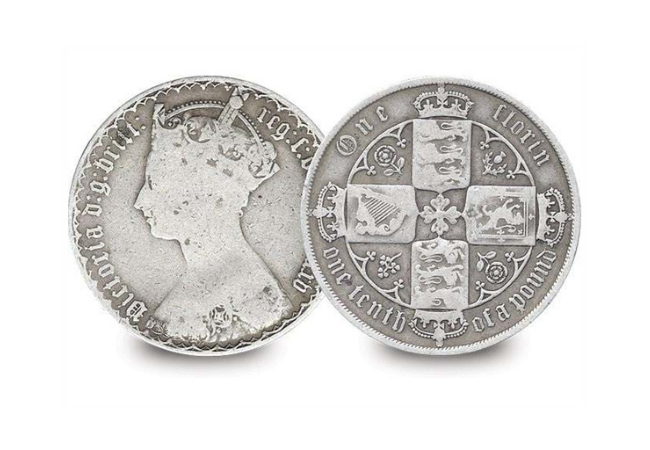
A second attempt
The Victorian’s made a second attempt at decimalisation in 1887 in the form of the Double Florin (equivalent to 1/5th of a pound, or 48 pennies), issued with a new portrait of Queen Victoria for her Jubilee. But this coin also wasn’t received well and was withdrawn from circulation completely by 1890.
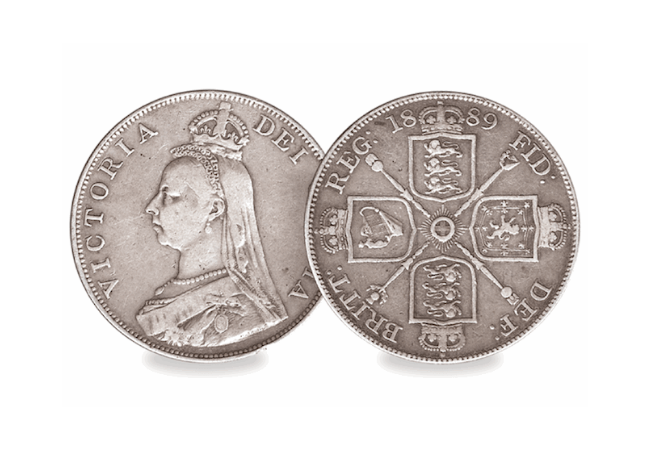
One of the features that makes the Double Florin stand out in history is that it was almost indistinguishable from the crown coin. Neither carried the denomination, and the only difference between the two (apart from the value) was that the Double Florin was 2mm smaller – not something that was easy to spot by eye. Because the two coins were so easily confused, the Double Florin became infamous for causing barmaid to lose their jobs after they short-changed pub owners!
The Victorians are famed for their innovation and sweeping changes in technology, industry, and culture. The Florin as a denomination did circulate until 1993 when it was eventually demonetised, and whilst there were countless experimentations with coinage and new denominations under Queen Victoria, it seems that the UK wasn’t quite ready for a change as big as decimalisation.
If you’re interested:
With such a fascinating story and sense of history behind it, it is no wonder that the Double Florin is such a highly-regarded British coin. Those that do remain are very difficult to track down and we have a very limited number available. And now you can spread your payment across 5 interest free instalments of JUST £19. Click here to secure yours today before they sell out!
Decimalisation: Your top five questions answered
This year marks the 50th anniversary of the Decimalisation of our currency. On 15th February 1971, known as Decimal Day (or D-Day), the country switched to the decimal currency (based on multiples of 10 and 100) that we are familiar with today. But what happened on that day, and why is it important to collectors?
Before then, Britain used a monetary system that dated thousands of years back to the Roman Empire! The problem with the old Pounds, Shillings, and Pence system (sometimes called ‘old money’) is that it was based on multiples of 12 and 240. This made it quite confusing – there were 12 pennies in a shilling and 240 pennies in a pound, and 20 shillings made a pound – certainly not easy to add up in your head!
We get a lot of questions about Decimalisation, so before we celebrate the anniversary next month, we’ve answered some of your top questions about the biggest change to UK currency ever!

What were the coins called before Decimalisation?
The Pounds (£), Shillings (/-) and Pence (d) system included lots of coins with very different names to today’s coinage. A lot of these coins were given slang nicknames, such as ‘thrupence’ or ‘thrupny bit’ for a threepence, or a tanner for a sixpence. A Shilling was sometimes called a ‘bob’, and a ten shilling note would often be referred to as a ‘ten-bob‘ note.
| Pre-decimal Coin | Amount | Decimal Equivalent |
| Halfpenny | ½d. | 5⁄24p ≈ 0.208p |
| Penny | 1d. | 5⁄12p ≈ 0.417p |
| Threepence | 3d. | 1¼p |
| Sixpence | 6d. | 2½p |
| Shilling | 1/- | 5p |
| Florin | 2/- | 10p |
| Half Crown | 2/6 | 12½p |
| Crown | 5/- | 25p |
Who was the first country to go decimal?
Did you know the UK wasn’t the first country to go decimal? In fact, as early as 1704 Russia introduced the Ruble which was equal to 100 Kopecks, making it the first country to have a decimal coin. It was followed by France which introduced the Franc in 1795. Although the UK was one of the last to turn decimal, discussions first started in Britain as early as the 1820s, but the idea didn’t take off well with the public so it wasn’t until 150 years later that it actually happened.
When were the first decimal coins issued?
The first new decimal coins were actually issued before decimal day in 1971 – three years earlier in fact! In 1968 the plans for decimalisation were set in motion. To try and help the public acclimatise to the new decimal coins, the 5p and 10p, were issued, followed by the 50p a year later in 1969. This meant that the coins circulated alongside their pre-decimal siblings (Shilling, Florin, and 10 bob note) and were used interchangeably. By 1971 when the pre-decimal coinage ceased to be legal tender, only 3 new coins would be introduced (Half pence, one pence, two pence), making the jump to decimal currency a little easier for the public.
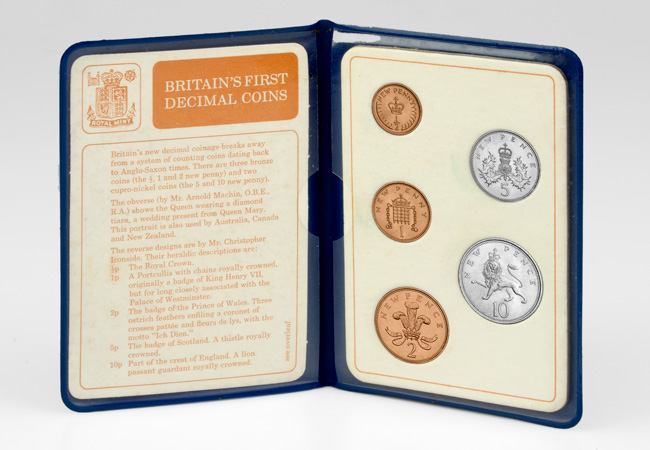
Why did the banks close for four whole days?
In 1971, very few banks used digital systems so on 10th February the banks closed for four days until Decimal Day. This allowed all outstanding cheques to be cleared in old money and all customers accounts to be converted into decimal coinage – and because most banks weren’t computerised, this had to be done manually! February was actually chosen as it was the quietest time of year for banks, shops, and public transport. It’s hard to imagine the banks closing for four days in a row now!
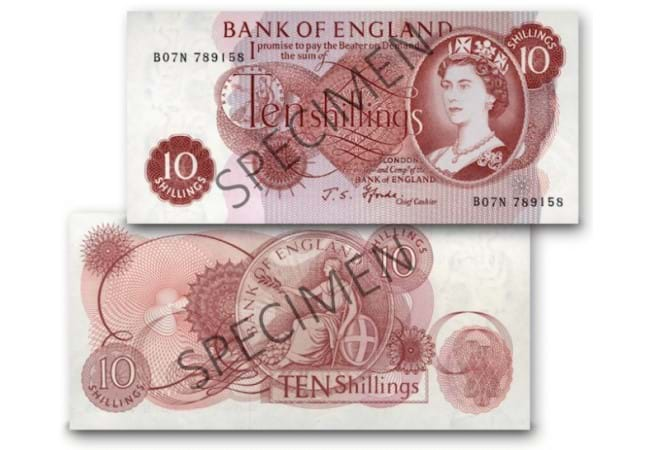
How did people compare between the two currencies?
Many people worried about shopkeepers inflating the prices of products during the changeover, but with a public information campaign that ran for almost 2 years prior, many people already had some idea of the conversions. And to help, currency convertors were made available to people, and shops displayed the prices in both currencies before and after Decimal Day. People could also continue to pay in old money, but they would receive their change in new money.
It took some time, but soon the decimal currency became familiar to everyone and continues to be the biggest change to UK coinage in thousands of years. In the lead up to the 50th anniversary, we’ll be issuing a series of blogs telling you all you need to know about this iconic moment in numismatic history, so make sure to stay tuned!
If you’re interested:
You can commemorate the 50th anniversary of Decimalisation now with the Historic Decimal Coins Collection! Including an ORIGINAL Decimal Coin Wallet, BRAND NEW BU 50p, and a FREE replica booklet. Click here to secure your Historic Decimal Coins Collection for JUST £29.99!

